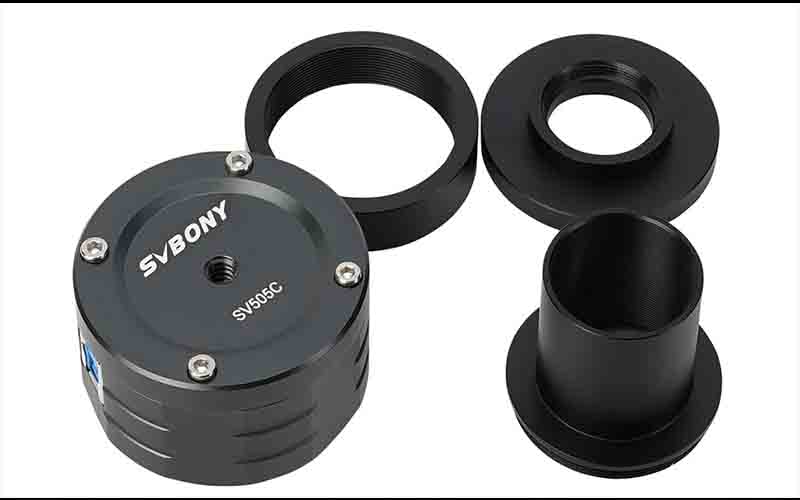Monochrome VS Color Planetary Cameras, Which One is Better?

Monochrome VS Color Planetary Cameras, Which One is Better?


First: Which is better for almost all planetary imaging applications?
Color planetary cameras are an excellent choice for beginners and advanced planetary imagers alike. Unlike monochrome cameras, color cameras don't require a costly filter wheel and filter set to produce a color image. Previously, monochrome planetary cameras could outperform color ones with more resolution. While that may have been true a few years ago, changes to interpolation algorithms and sensors have allowed color planetary cameras to essentially match their monochrome counterparts. Another reason monochrome had an edge over color was that it could image into the near infrared part of the spectrum, which was very useful for penetrating Jupiter's atmosphere for some imaging purposes. We recommend most astrophotographers, especially beginners, go with a color planetary camera for planetary imaging.
Second:Which is better for imaging in the near infrared, autoguiding, & research?
Monochrome planetary cameras are a great choice for the planetary imager requiring the most precision and versatility. Although they require a filter wheel and filters to create a color image, monochrome cameras can provide the most control vs. a color camera. Using IR Pass filters will allow you to capture some details in the near IR range that most color planetary cameras can't due to an IR cut window just in front of the sensor. Additionally, the effects of atmospheric seeing are greatly reduced in the IR part of the spectrum, meaning you can still image even in less-than-ideal conditions. Another strong use case for monochrome planetary cameras is that they can be used for both planetary imaging and autoguiding, since they have the extra sensitivity to pick up faint stars for guiding. Lastly, they're the choice of researchers for their increased sensitivity across the entire spectrum.
Third:Which camera is better for deep sky imaging; a color or monochrome camera?
From a purely technical standpoint, monochrome cameras are inherently better than color cameras due to their sensor design.mono produce a cleaner and slightly sharper image than color cameras can. The reason for this is that every pixel in a monochrome telescope camera is dedicated to collecting all light data, no matter its color, whereas color cameras require a composite of red, green and blue sensors to create a color image in a single shot. On the other hand, in order to create a color image with a monochrome camera you must add a filter wheel/drawer along with costly filters to produce a composite color image from multiple exposures. Not surprisingly, this is more difficult and time consuming than using a color camera to capture all colors in a single shot.
Color cameras produce color images right out of the box. Although monochrome cameras still have the upper edge when it comes to image clarity, color telescope camera technology and astronomy filters have gotten so good in recent years that it can be difficult to tell the difference between images made from either camera type.
If you're just beginning astrophotography, we recommend starting off with a color camera. If you're already an experienced astrophotographer, consider upgrading to a monochrome CMOS or CCD telescope camera.
So do you know how to pick it now?








